Foam rolling can help reduce tightness and trigger points in areas like the quads, hamstrings, calves, lower back, lats, shoulders, and IT band, among other muscle groups.
Foam rolling is a form of self-massage you can perform at home using a foam roller. These come in various sizes and materials but share a mostly cylindrical design.
Foam rolling may boost blood flow and the elasticity of muscles, joints, and fascia — the body’s connective tissue. Potential benefits include:
- preparing muscles for exercise
- reducing muscle soreness, tension, and stiffness
- supporting muscle recovery and flexibility
- lowering injury risk
- easing psychological stress
Nicole Davis, a certified personal trainer, notes that foam rolling can be especially useful for people who sit for extended periods, have rounded posture, joint concerns, or trouble maintaining proper form during workouts.
Read on for nine foam-rolling techniques that target common stiff spots and muscle knots to help release tension throughout the body.
1. Quads
If your job keeps you sitting most of the day, rolling your quads can promote circulation and keep those muscles active.
Directions:
- Begin in a forearm plank with the foam roller under your quads.
- Supporting yourself with your upper body and core, slowly roll down until the roller reaches just above your knees. Then roll back up toward your hip flexors.
- Continue for 30 seconds.
- If you find a tender spot, pause there for a few breaths.
If you’re comfortable with foam rolling, try working one quad at a time. This increases pressure on tight areas and allows you to target specific spots more precisely.
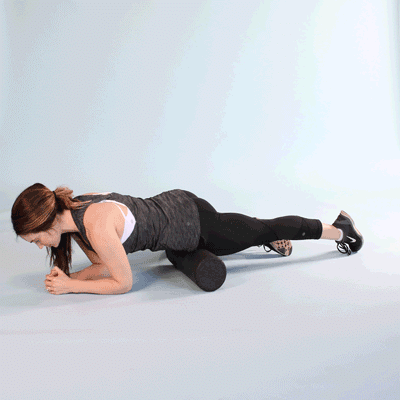
3. Calves
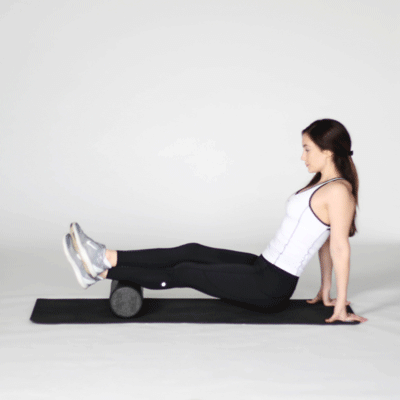
Alongside calf stretches, foam rolling is an effective way to address trigger points and knots in the calves and improve ankle mobility.
Directions:
- Sit on the floor with your legs extended and the foam roller placed under your calves.
- Lift your hips so your weight rests on the roller. Cross your left leg over your right for added pressure.
- Gently roll your right calf back and forth by moving your body forward and backward with your arms.
- Continue for 30 seconds.
- Switch legs and work the left calf.
4. Hamstrings
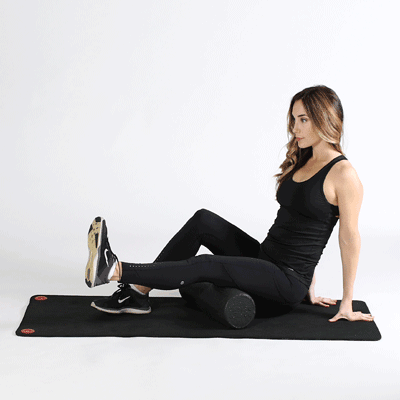
Hamstrings are powerful but often prone to tightness and stiffness, which can increase injury risk if not warmed up or cared for after exercise.
Directions:
- Sit with your legs extended and place the foam roller beneath your hamstrings.
- Lift your hips so the roller supports your weight. Slowly roll between the back of your knees and your glutes.
- Pause on sore spots, and roll for at least 30 seconds in total.
You can also cross your legs to isolate one hamstring at a time for a more focused massage.
5. IT band
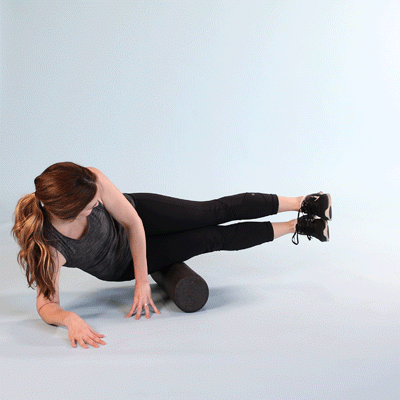
The iliotibial (IT) band is connective tissue that runs along the outer thigh from hip to knee.
A tight IT band is a common source of knee pain and soreness in athletes. Foam rolling can be helpful for myofascial release and loosening knots to ease IT band discomfort.
Directions:
- Lie on your right side with the foam roller under your right IT band (the side of the thigh). Support your upper body on your right forearm. Keep your right leg straight and bend your left knee with the left foot positioned comfortably in front of the right leg.
- Using your upper body and left leg for support, slowly roll your right IT band from knee to glute, stopping at tender areas.
- Roll for 30 seconds, then switch to the left IT band.
6. Upper back
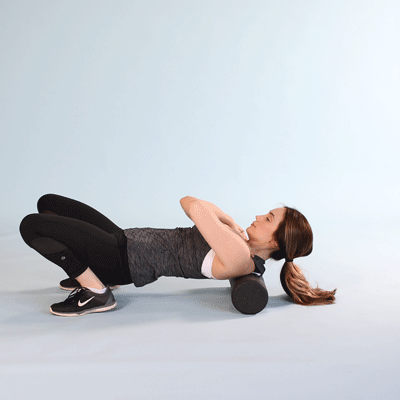
Foam rolling can ease upper-back tension and may enhance spinal mobility, flexibility, and pain-threshold at pressure points.
It may also reduce musculoskeletal discomfort and back pain associated with extended desk work.
Directions:
- Lie on your back with the foam roller under your upper back. Bend your knees and keep your feet flat on the floor. Place your arms at your sides or cross them over your chest.
- Engage your core and lift into a gentle bridge.
- Slowly roll between your lower neck and mid-back, pausing at tight spots.
- Continue for 30 seconds.
7. Lats
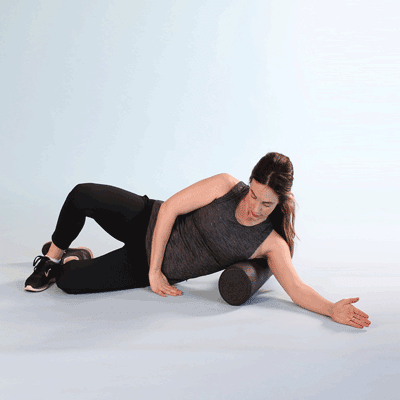
The latissimus dorsi (lats), often called your “wings,” sit on the back beneath the armpits. Tight lats can negatively affect posture and may contribute to lower back discomfort over time.
Foam rolling can help keep them supple and prevent stiffness.
Directions:
- Lie on your back at about a 45-degree angle with the foam roller under your right lat. Keep your right leg straight and bend your left leg into a comfortable position.
- Slowly roll from your right armpit down toward the mid-back, focusing on sore areas.
- Continue for 30 seconds.
- Switch to the left lat and repeat.
8. Shoulders
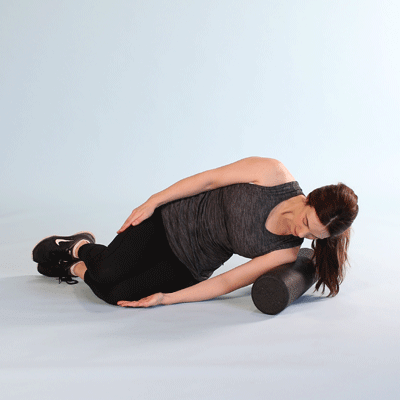
Research indicates myofascial techniques aimed at the shoulders and chest may improve shoulder mobility and stability, and foam rolling is one such approach.
Directions:
- Lie on your side with the foam roller under your right shoulder. Keep your lower body relaxed on the ground and extend your left arm in front to guide movement.
- Gently roll up and down over the deltoid. Slightly rotate your torso to reach part of the upper back if needed.
- Roll for 30 seconds.
- Switch sides and work the left shoulder.
9. Neck
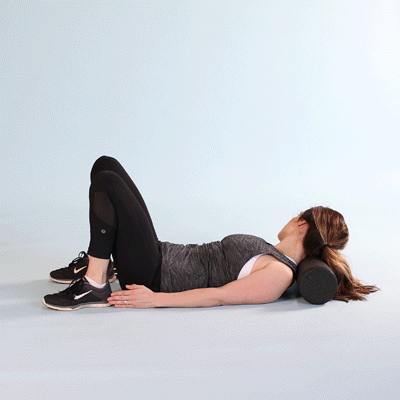
A foam roller can also be useful for addressing trigger points in the neck and encouraging myofascial release. This can relieve neck tension and enhance neck stability, function, and range of motion.
Directions:
- Lie on your back and rest your neck on the foam roller near where it meets your head.
- Slowly turn your head to the right and pause where you feel tightness.
- Exhale and turn your head to the left.
- Continue for 30 seconds.
Frequently asked questions
What are the negatives of foam rolling?
Foam rolling is typically safe for most people. However, avoid rolling directly over an active injury such as a bruise, strain, muscle tear, or fracture. Foam rolling can also produce brief discomfort, particularly in very tight areas.
Why are my legs so sore after foam rolling?
Leg soreness after foam rolling may occur if the muscles were highly tight or if too much pressure was used too quickly. Foam rolling can also aggravate an existing leg injury.
Is it OK to foam roll every day?
In many cases, daily foam rolling is acceptable. Still, consult a physiotherapist or doctor before making it a daily habit, especially if you have injuries or musculoskeletal conditions. They can advise on appropriate frequency, types of exercises, and intensity.
The bottom line
Foam rolling is a self-massage method that can help relieve tension, pain, and tightness across many muscle groups.
Certain moves may enhance range of motion and flexibility in the upper body, while others focus on the lower body.
If you’re new to foam rolling, consider consulting a physiotherapist or doctor before you begin. They can help you create a suitable routine.


















Leave a Reply
You must be logged in to post a comment.